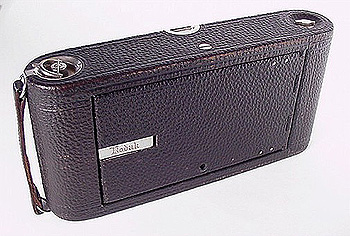|
When folded, the No. 3A camera could easily fit a jacket
pocket or purse.
More importantly, from an archival perspective, the large Kodak #122 roll
film negative was the same size as the print, approximately 5 1/2" x 3 1/4".
In the early days of photography, enlargers were bulky and expensive, hence
they were rarely used for casual photography. The result is that real photo
postcards are highly detailed if properly taken and preserved.



Post cards that were actual photographs were almost always distinguished
as such by information imprinted by Kodak ( and other manufacturers of
post card photo paper) on the back of the card. Creators and sellers of
post cards wanted there to be no confusing a real photograph with an
image printed on a printing press.
The continuous tone print of a photograph produces
a much more
detailed visual record. The following three post cards exemplify
the way this message was conveyed to the public.

|
![]()